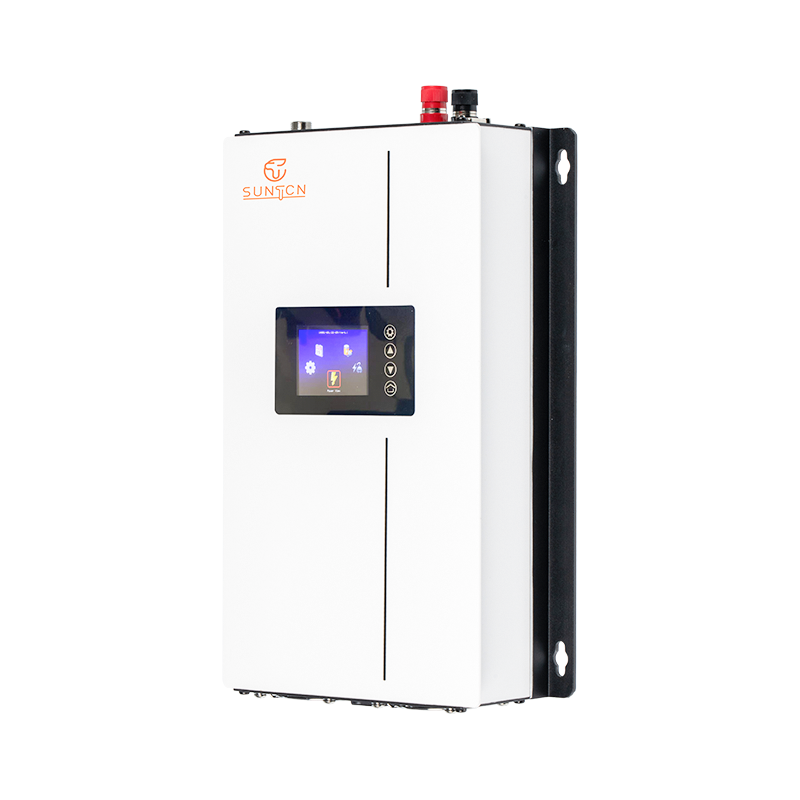In the global renewable energy revolution, solar power generation systems have attracted much attention as clean and efficient energy solutions. The key equipment, Solar Grid Tie Inverter, plays a vital role. It is not only responsible for converting direct current (DC) generated by solar power into alternating current (AC), but also needs to work synchronously with the grid to ensure power generation efficiency and grid connection stability.
Solar Grid Tie Inverter is an inverter designed for grid-connected solar power generation systems. It is mainly used to convert the direct current generated by photovoltaic modules into alternating current synchronized with the grid. Unlike traditional off-grid inverters, grid-connected inverters can transmit excess power to the grid in real time, helping users to share energy and reduce electricity bills.

The operation process of Solar Grid Tie Inverter can be divided into the following steps:
The photovoltaic module converts solar energy into direct current, and the inverter receives this current through the input port.
The internal power conversion module converts direct current into alternating current that matches the frequency and voltage of the grid.
Through the built-in synchronization circuit, the inverter ensures that the output AC power maintains the same frequency and phase as the grid to avoid grid fluctuations.
The converted AC power is first supplied to users for their own use, and the excess power is automatically transmitted to the grid through the inverter.
Solar Grid Tie Inverter can convert DC power into AC power with an efficiency of more than 95%, maximizing the use of solar resources for users.
The inverter monitors the frequency, phase and voltage of the grid in real time to ensure that the output power is perfectly matched with the grid.
The built-in MPPT algorithm can adjust the input current and voltage according to the light intensity and component characteristics to always maintain the highest output power of the photovoltaic module.
When the grid is out of power or fails, the inverter can immediately stop outputting power to the grid to ensure grid safety and protect equipment.
Modern grid-connected inverters are usually equipped with communication interfaces (such as Wi-Fi, Bluetooth), and users can monitor power generation and grid-connected data in real time through mobile phones or computers.
The solar power generation system achieves self-generation and self-use and surplus power is connected to the grid through the grid-connected inverter. Users can not only save electricity bills, but also obtain electricity sales income from the grid company.
Grid-tied inverters help photovoltaic systems directly supply power to the grid, reduce dependence on fossil fuels, and effectively reduce carbon emissions.
Solar Grid Tie Inverter is compatible with various types of photovoltaic modules and grid systems, with strong flexibility, suitable for home, commercial and industrial scenarios.
Modern inverters are compact in design, easy to install, and have intelligent fault detection functions, which simplifies daily maintenance.
As solar power generation technology continues to develop, Solar Grid Tie Inverter is also constantly improving. Here are several key trends in the future:
By adopting new semiconductor materials such as silicon carbide (SiC) and gallium nitride (GaN), future inverters will achieve a qualitative leap in conversion efficiency and heat dissipation performance.
Future grid-tied inverters will deeply integrate artificial intelligence and Internet of Things technologies to provide more accurate energy prediction and distribution, and optimize the overall efficiency of the system.
With the rapid development of energy storage technology, grid-tied inverters will seamlessly integrate with battery energy storage systems to provide users with all-weather energy supply and power supply guarantees.
Future Solar Grid Tie Inverter will support microgrid mode, realizing localized power distribution and self-power supply in the event of regional power outages.
As the core component of the solar power generation system, Solar Grid Tie Inverter not only promotes the integration of photovoltaic energy into the grid, but also brings significant economic and environmental benefits to users. With the continuous advancement of technology, this device will play a more important role in improving the efficiency of photovoltaic systems, reducing costs and supporting the construction of smart grids, contributing to the global energy transformation.

 English
English Español
Español Deutsch
Deutsch










